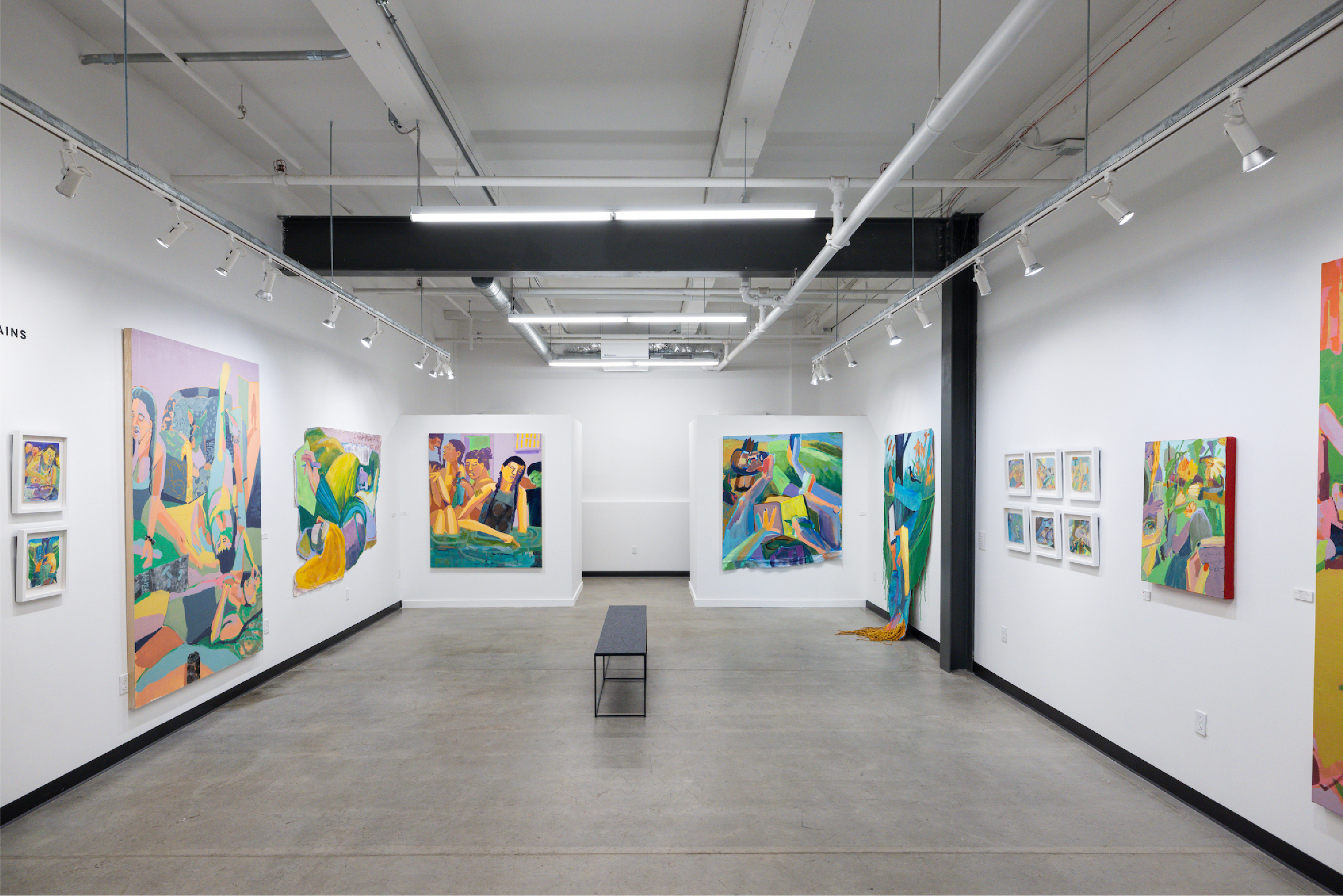Corrine Yonce is an artist, fair & affordable housing advocate, and documentarian from Winooski, Vermont.
Yonce explores the connective qualities of story sharing and receiving through figurative painting and audio portraits. Her place-based, story-centered paintings and installations dig into the concepts of home and housing from a community and personal perspective. Currently, Corrine Yonce is completing her MFA at Maryland Institute College of Arts as part of their low-residency MFAST program while serving the CVOEO Fair Housing Project as tenant advocate and educator.


:: An informal interview with Corrine
What are your preferred pronouns?
She/her ; they/them (both work)
Where do you call home?
Winooski, Vermont
What is your program and year of graduation?
MFAST MFA Studio Art, 2023
What inspired you to take the leap of going to graduate school?
Graduate school has been on my radar for years but I feel a deep commitment to my community and home. Last year I took the leap of applying and was mostly looking at fully funded/ fellowship opportunities- but I did so with reservation. I did not want to leave my community behind who I have collaborated with, advocated for, and help organize for the past 5 years here in Vermont. My initial interest in MICA was the Community Arts Mfa program, but a deeper dig into the program found a lot of overlap and repetition of my own education journey. The MFAST program was a shot in the dark, but the faculty were by far the most supportive and communicative of all the programs I looked into. Long story only marginally shorter- COVID struck, housing needs in my state skyrocketed, and MICA MFAST faculty continued to be there for support even before my commitment to the program. I could not have said yes without this fellowship. It was a done deal, and I continue to be grateful for this opportunity.
How has this scholarship impacted your thinking and process during your time in graduate school?
The Leslie King Hammond Fellowship has allowed me to join the MFAST MICA program and honestly, there is not enough room in this form to put to words how remarkable a privilege it has been to be able to attend a rigorous MFA program from the safety of my home during the pandemic. I have learned to trust my own instinct in my needs, my goals, & how to achieve them. Many of my mentors questioned if a low-residency program would support my educational needs, or suggested such programs only exist for "mothers" and caretakers without the choice of mobility. There is a romantic notion of young adults traveling across the country for opportunity, of the flexibility from jumping to MFA program to residency to residency. For those of us who did not have the choice to lay roots in a community or without access to a safe home, such a path is less alluring. The rest of the world joined us in this suspicion when staying safe became staying home. Being able to dive into MICA MFAST from the sanctity of my home has affirmed my belief in the importance of housing access and housing choice. It allows me to continue to work alongside the affordable housing communities which have fed my art practice while maintaining the new-found steadiness that my home and chosen family shared with me in this recent quarter of my life. With this scholarship I continue to advocate for housing in my communities, I am able to support the undergraduate community through my GTI position, and I can grow, learn, and challenge myself as an artist. I also feel some weight in receiving this gift- who might have been able to attend a MICA program if I had not accepted this fellowship?
What have you been working on? Share the driving questions and inspiration that informs your work as an artist, designer, educator and/or activist.
“Home,” especially as it bumps against the private/public, threads my art practice, my community projects, my employment. Most of my childhood objects scatter in basements where my family landed and then eventually vacated, spaces condemned, foreclosed on, or never our own. Perhaps painting is an impulse to re-materialize my personal histories lost over time. With the Stay At Home order, my murals of 2019 scaled down to the paper works of 2020. The works in home in what remains depicts figures lounging, laying, and leaning on one another in domestic interiors. The feminine figure is prioritized in a tight domestic space by enlarging the female figure and warping into the first-person “i” perspective. The paintings reach for domestic reference points both in content and in material, hanging like drapes and featuring puddling mops & reflective mirrors. My deepest personal inquiry as a painter right now is how to bridge my paintings back to my community art, my housing advocacy, and my community organizing. For me, the answer lies in the personal, and where my “personal” is orientated within the context of today. What is my relationship to my home space, and how does that confirm or deny traditions of the feminine domestic? My commitment to painting bumps up against my work as a housing advocate and my lived experience of housing insecurity. I am contending with these twin impulses to document, witness, interpret other’s narratives and to unpack my own personal narratives of housing insecurity in an all female family.